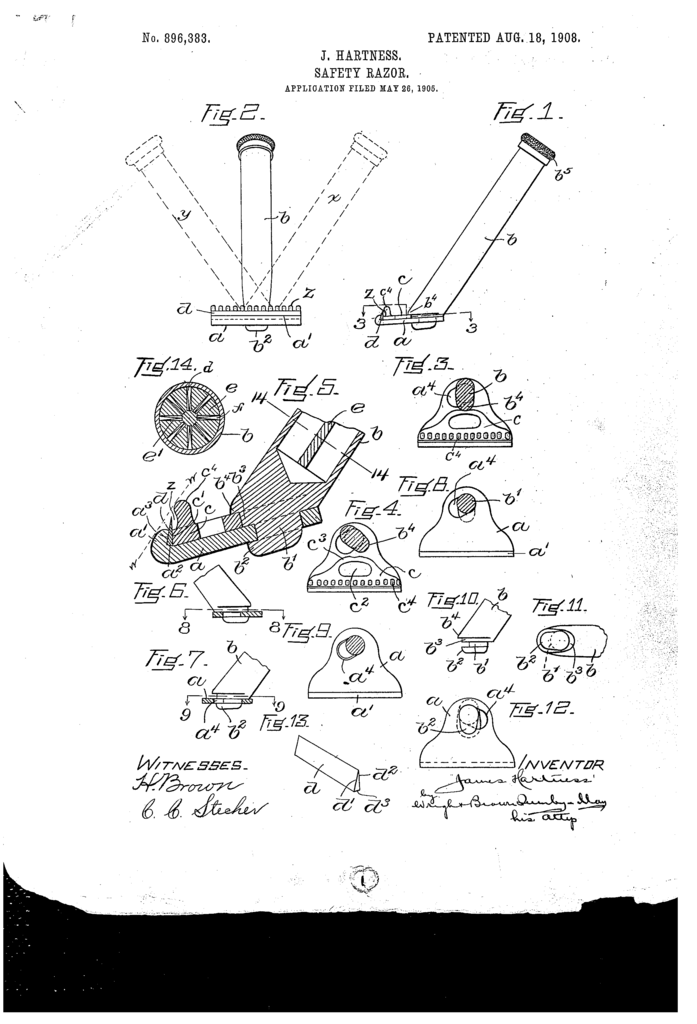James Hartness was a prolific inventor, with quite a few patents to his name. While most of them are for machines and machine tools, he also dabbled in safety razors. In 1905 he was awarded a patent for one, specifically set up for disposable blades. Quite the novelty that early, considering that Gillette were trying to set up a system where blades could be returned for sharpening1, and Kampfe, Clemak, Christy (and others using his blades) and even Curbo were selling blade the user could hone at home.
The blades for the razor were to be small, easily manufactured and inexpensive. In fact, they could be made by the mile, once a factory was set up. To quote the patent directly:
One of the primary objects of the invention is to provide a safety-razor with a miniature blade which may be used so long as it is sharp or keen, and then discarded and thrown away. Preferably, the blade is made of wire. Instead of being formed of sheet metal, the blade, while extremely small in cross-section, is so constructed as to be as rigid as possible, said blade having faces converging at the proper angle to form a sharp cutting edge.
James Hartness, in US patent 896,383
The design
The holder for this wire-blade was quite different from most other safety razor. While superficial similar to the so called hoe-style razor, the edge was not pointing in the same direction as most other razors. Instead if “sticking out” from the side of the head, it were pointing “downwards”. This can clearly be seen on the drawing. I am not sure what James Hartnes were trying to achieve by this, it would make going against the grain somewhat awkward on the cheeks.

The blade would be positively tiny. The form and dimensions are given in the patent text;
The blade itself, as previously stated, is made of Wire. It is very small in size, being not more than one eighth of an inch wide and one sixteenth of an inch, or less, thick, at its back. The two faces d1 d2 of the blade are preferably ground flat, and they form with the base or back d3 an isosceles triangle. The blades are made from a length of wire which is properly ground and tempered.
JAMES HARTNESS, IN US PATENT 896,383
This small wedge shaped blade can be seen in Figure 13, bottom centre of the drawing. The unusual angle of the blade’s edge can be seen in Figures 1 and 5. The head itself is a three part clamp, where rotating the handle moves a cam. The cam in turn moves the upper and lower part of the head in relation to each other. This loosens or tightens the clamping force on the blade. If turned one way, the lower part of the head were loosened to replace the blade. Turned the other the whole head would come off. This would be useful for cleaning, and also for storage. In a way, the cam were as critical to the design as the blade were.
Final thoughts
The razor is simple enough. Few parts, although a bit of precision machining would have to happen to the camming surface on the handle. The razor suffered, I feel, from the odd angle of the blade. This may be why I cannot find any references to it being manufactured.
The whole patent can be read at Google Patents. And if you like old shaving patents and other oddities, I got a page full you can check out.
- They would send you one new blade for each two you sent in. You could also buy resharpened blades for less than the price of new ones.
